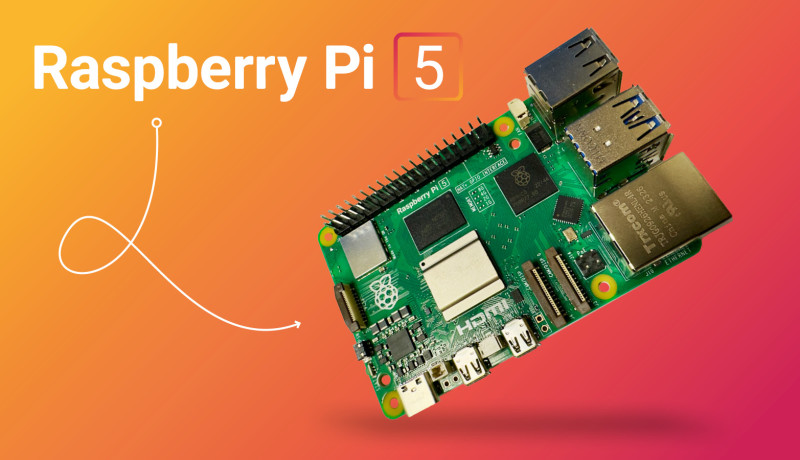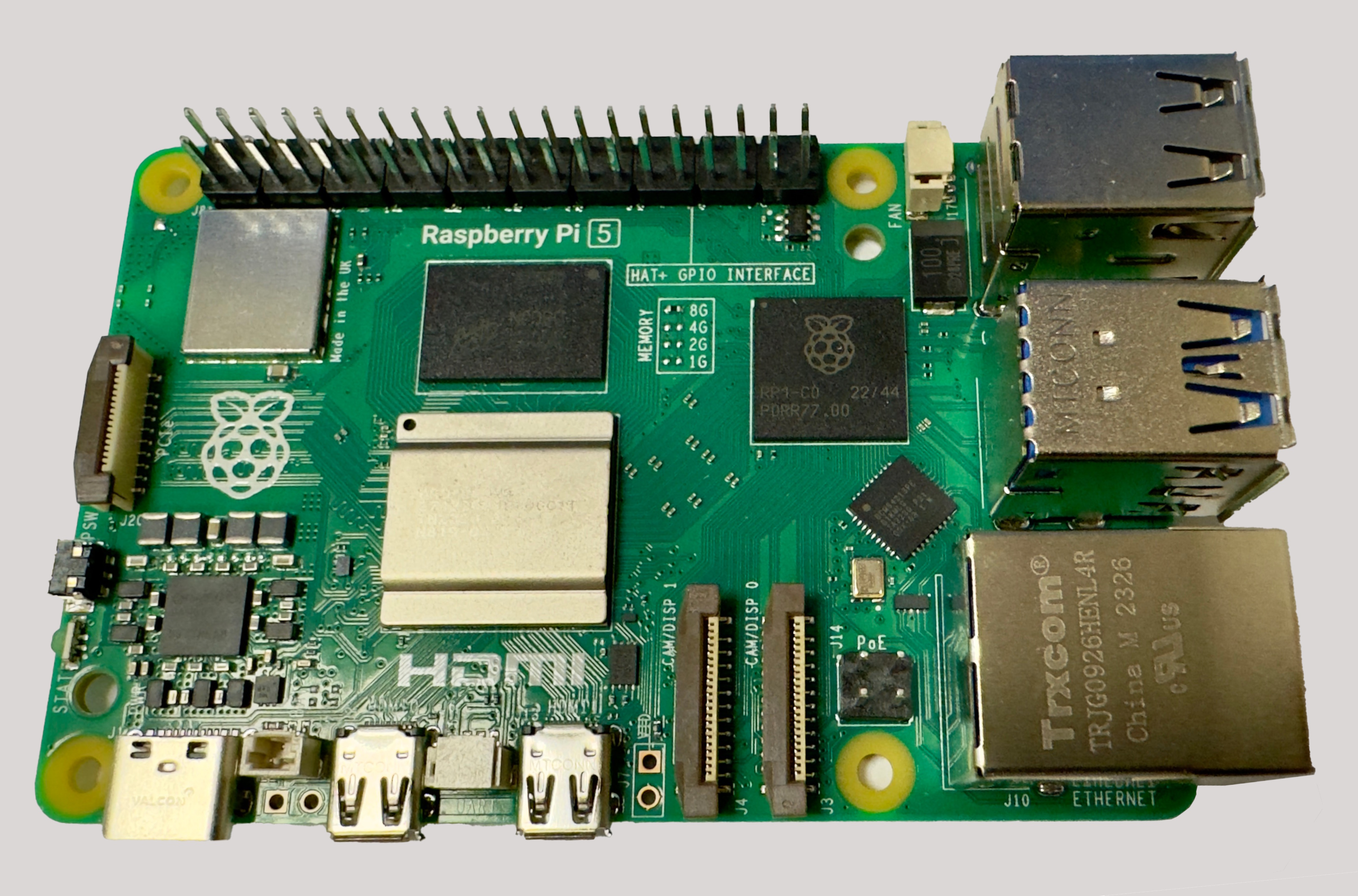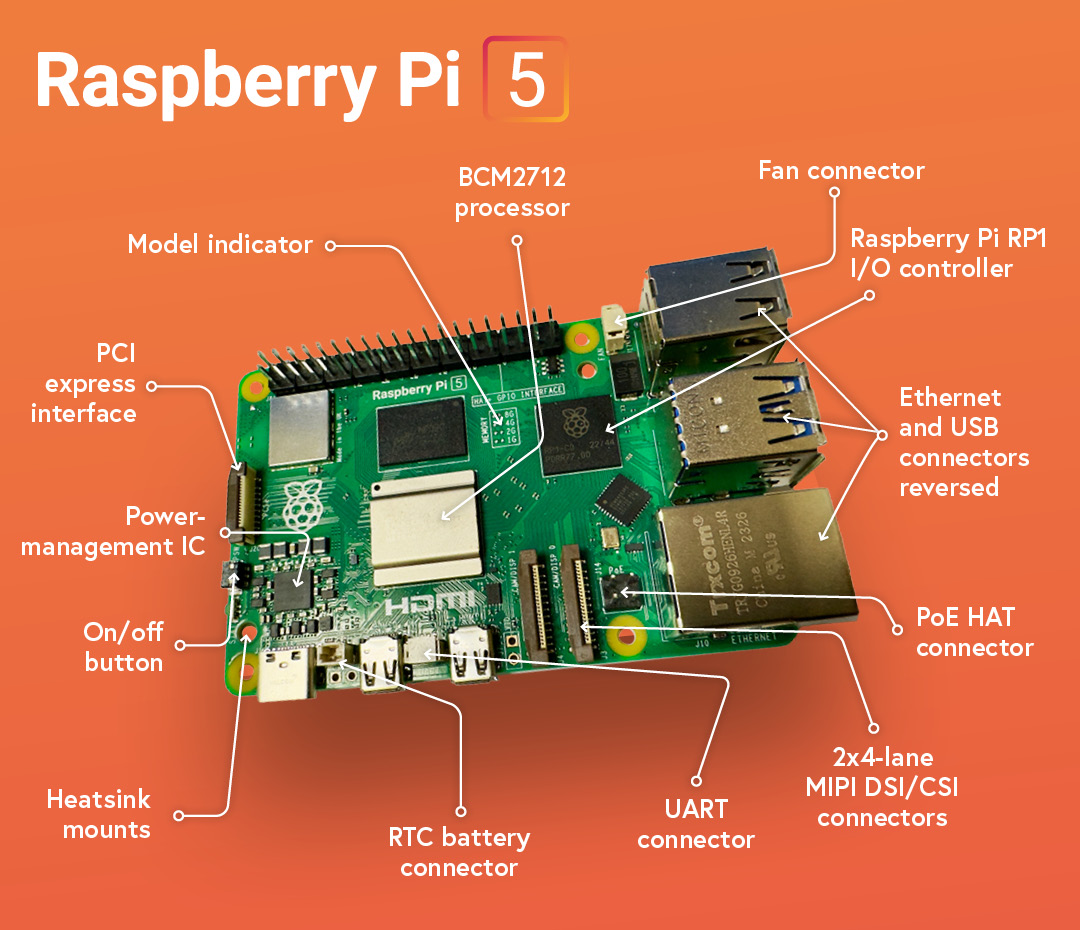Raspberry Pi 5: A First Look
September 28, 2023
on
on

With an international community of enthusiasts and a majority share of industrial users watching closely to see the next iteration of the flagship of the famous range of single-board computers, Raspberry Pi has come up with yet another eagerly anticipated advance in the Raspberry Pi 5. Whether it's more speed, more power, or more features someone's looking for, the Raspberry Pi 5 is sure to check all the boxes when compared with its predecessors. With a powerful 64-bit Arm Cortex-A76 at the helm, it runs four cores at 2.4 GHz, meaning a roughly 2.5x increase in performance over the Pi 4’s Cortex-A72 running at 1.8 GHz.

Subscribe to the Elektor Newsletter (E-Zine) to stay informed about Raspberry Pi.
Take a look at the main spec differences between the Raspberry Pi 4 and the Raspberry Pi 5:
The other peripherals and connections present on the Pi 4 are still there, of course:
Besides those regulars another couple of exciting developments sit in the power chain:
There's an on/off switch, just like on a "real" computer! In addition, to bring this 2.4 MHz behemoth all the power it needs the new Raspberry Pi power supply starts off at 5.1 V/5 A, but can also switch up to 9 V/3 A, 12 V/2.25 A, or 15 V/1.8 A. with its PD support. Not only will this deliver power for the Raspberry Pi 5 board, but it will make the Raspberry Pi power supply an affordable yet powerful fast charger for compatible USB-C devices. Unfortunately, it won't handle the 20 V favored by modern laptops.

Speaking of power, we also now have a real-time clock on board, which can be powered by a small lithium-ion battery module. This means that if it boots up and there's no internet access, it won't be lost in time - as long as you have the battery, of course. The battery will be available separately, as shipping batteries globally requires another level of compliance.
The case for it, available a bit after launch date, will be thicker, and allow for the new Raspberry Pi fan and heatsink.
Subscribe to the Elektor Newsletter (E-Zine) to stay informed about Raspberry Pi, Raspberry Pi 5 specs, and more.
More Raspberry Pi Silicon
Of course, performance is not dictated solely by the CPU. Emboldened by their highly successful endeavor in creating their own silicon, the RP2040 microcontroller, Raspberry Pi put its team to work creating its own South Bridge chip, the RP1, to support the main CPU. And that's not its only job, of course.
Subscribe to the Elektor Newsletter (E-Zine) to stay informed about Raspberry Pi.
Additional Features
The Raspberry Pi 5 has a host of other features that are sure to have fans rubbing their hands together in glee, such as dual MIPI ports on the board, to which you can connect up to two cameras, or two displays, or just mix and match. It also has a PCI Express high-speed serial expansion bus, which opens up many possibilities, such as running an M.2 solid-state drive (using a suitable HAT or adapter, which will be available some time after launch).Take a look at the main spec differences between the Raspberry Pi 4 and the Raspberry Pi 5:
| Raspberry Pi 4 | Raspberry Pi 5 | |
| Processor | ARM Cortex-A72, 4-core | ARM Cortex-A76, 4-core |
| CPU clock | 1.8 GHz | 2.4 GHz |
| Instruction set | ARMv8-A | ARMv8.2 |
| CPU cores | 4 | 4 |
| SDRAM capacity | 1 GB, 2 GB, 4 GB, 8 GB | 1 GB, 2 GB, 4 GB, 8 GB |
| L2 Cache | 1 MB (shared) | 2 MB (512 KB for each core) |
| L3 Cache | none | 2 MB (shared) |
| MicroSD mode | SDR50 (50 MB/s bus max.) | SDR104 (104 MB/s bus max.) |
| PCIe | none | 1x 2.0 |
The other peripherals and connections present on the Pi 4 are still there, of course:
- 2 USB 2.0
- 2 USB 3.0 (but faster now)
- Gigabit Ethernet (although moved back to its "rightful" place at the bottom-right of the board)
- Raspberry Pi standard 40-pin header
- 2.4 GHz and 5 GHz Wi-Fi
- Bluetooth 5.0 / BLE
- 2 micro HDMI ports (this time capable of smooth, simultaneous 4k at 60 Hz)
- 2 MIPI ports (but this time there's input and output on both)
 A Powerhouse Awakes
A Powerhouse Awakes
Besides those regulars another couple of exciting developments sit in the power chain:There's an on/off switch, just like on a "real" computer! In addition, to bring this 2.4 MHz behemoth all the power it needs the new Raspberry Pi power supply starts off at 5.1 V/5 A, but can also switch up to 9 V/3 A, 12 V/2.25 A, or 15 V/1.8 A. with its PD support. Not only will this deliver power for the Raspberry Pi 5 board, but it will make the Raspberry Pi power supply an affordable yet powerful fast charger for compatible USB-C devices. Unfortunately, it won't handle the 20 V favored by modern laptops.

Speaking of power, we also now have a real-time clock on board, which can be powered by a small lithium-ion battery module. This means that if it boots up and there's no internet access, it won't be lost in time - as long as you have the battery, of course. The battery will be available separately, as shipping batteries globally requires another level of compliance.
The case for it, available a bit after launch date, will be thicker, and allow for the new Raspberry Pi fan and heatsink.
More Raspberry Pi 5: Watch This Space
With a shipping date of October 23, many won't be able to see this new flagship put to the test, and, luckily, you won't have to. We at Elektor are already benchmarking and tinkering, so you can be sure that comprehensive details and thorough reviews will hit your screens soon! What features are you most excited about, and what's missing? Be sure to let us know in the comments, as this will be an interesting discussion. Subscribe
Tag alert: Subscribe to the tag Raspberry Pi 5 and you will receive an e-mail as soon as a new item about it is published on our website! Subscribe to the Elektor Newsletter (E-Zine) to stay informed about Raspberry Pi, Raspberry Pi 5 specs, and more.
Read full article
Hide full article











Discussion (1 comment)